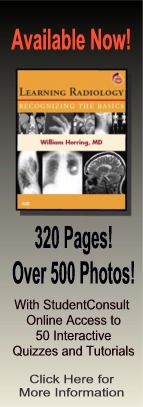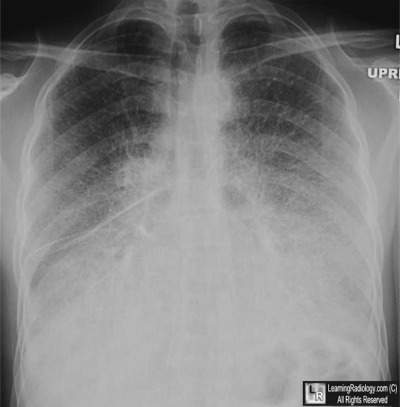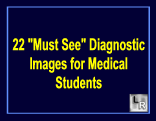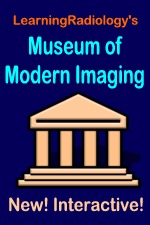| Cardiac | |
|---|---|
| GI | |
| Bone | |
| GU | |
| Neuro | |
| Peds | |
| Faculty | |
| Student | |
| Quizzes | |
| Image DDX | |
| Museum | |
| Mobile | |
| |
Misc |
| Videocasts | |
LearningRadiology Imaging Signs
on Twitter
![]()
Follow us on
What is the most likely diagnosis?
- 43 year-old mild shortness of breath
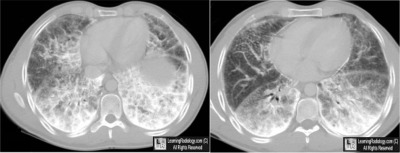
Axial non-enhanced CT Images of the Lower Chest
- Silicosis
- Sarcoidosis
- Smoke inhalation
- Lipoid pneumonia
- Pulmonary alveolar microlithiasis
Additional Images - Frontal chest radiograph
![]()
Answer:
.
5. Pulmonary Alveolar Microlithiasis
.
.
More (Click Discussion Tab)
Pulmonary Alveolar Microlithiasis
General Considerations
- Very rare, chronic disease characterized by widespread calcifications called "calcispherites" within the alveoli
- Etiology is unknown but it has a familial incidence with an autosomal recessive inheritance pattern
- No known calcium metabolism disorder
- Microliths range from 0.01 to 3 mm in size and are composed of calcium phosphate
.
This Week
43 year-old with mild shortness of breath |
Presented as a series of cards, this podcast asks some of the most common causes of neuroimaging findings and diseases making it ideal for a quick review. Can be used as either an audio only or audio/video podcast.; Complements Video Flashcard Podcasts 15, 21,25, 38, 42, 46 and 47. |
Some of the fundamentals of interpreting chest images |
The top diagnostic imaging diagnoses that all medical students should recognize according to the Alliance of Medical Student Educators in Radiology |
Recognizing normal and key abnormal intestinal gas patterns, free air and abdominal calcifications |
Recognizing the parameters that define a good chest x-ray; avoiding common pitfalls |
How to recognize the most common arthritides |
LearningRadiology
Named Magazine's
"25 Most Influential"
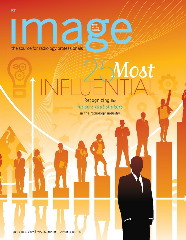
| LearningRadiology.com |
is an award-winning educational website aimed primarily at medical students and radiology residents-in-training, containing lectures, handouts, images, Cases of the Week, archives of cases, quizzes, flashcards of differential diagnoses and “most commons” lists, primarily in the areas of chest, GI, GU cardiac, bone and neuroradiology. |

